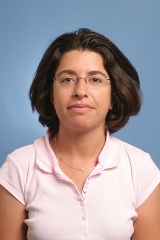非常抱歉,
你要访问的页面不存在,
非常抱歉,
你要访问的页面不存在,
非常抱歉,
你要访问的页面不存在,
验证码:

职称:Assistant Professor
所属学校:University of California-Riverside
所属院系:Chemistry
所属专业:Chemistry, General
联系方式:(951) 827-4506
Our research projects are aimed at understanding processes that result in formation of atmospheric aerosol particles. Aerosol particles can deteriorate air quality, reduce visibility, affect cloud formation and lifetime, and change the radiation balance of the earth. These particles may be emitted directly into the atmosphere (“primary aerosol”, such as sea-salt, dust, and soot) or formed by secondary processes such as gas to particle conversion, heterogeneous reactions, or aqueous phase reactions (“secondary aerosol”, such as sulfate, nitrate, and organic particles). Depending on the ambient conditions (e.g., relative humidity) and types of precursors and oxidants available in an area, certain processes may be more important than others for secondary aerosol formation.
Although details of such chemical transformations are not well understood yet, fundamentally it is established that size and chemical composition of aerosol particles determine their lifetime, health, and environmental impacts. Therefore, the key to a better understanding of aerosol formation processes and their regional and global impacts is to characterize their size and chemical composition in as much detail as possible.